Where is the stock market going in 2023?

The stock market posted impressive gains in the first two months of 2023. It’s fair to say that the strong market rally in January caught a lot of market experts and investors off guard. The general mood at the end of 2022 was quite negative. The overwhelming consensus expected a recession at the beginning of 2023. Despite that, I issued an article in early January titled “Why investors should cheer this bear market.” I discussed several reasons you should feel excited about the stock market in 2023. And my view hasn’t changed. Let’s dive deeper into what we should expect this year. One thing is for sure, the stock market in 2023 will keep us on our toes as usual.
“The market is a distribution mechanism to transfer wealth from the impatient to the patient.”
Analyst divergence
The current economic environment remains very challenging for analysts. You can see from the chart below that there is a 40% difference in S&P 500 year-end targets, the highest since 2009. A group of gloom and doom analysts calls for another 20% to 30% correction in the stock market. Another group of more optimistic investors believes that the worst is behind us and that the stock market in 2023 will have a strong performance. And there is a whole lot in between.
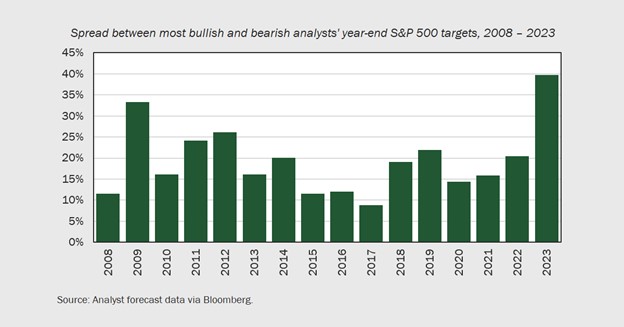
As usual, I remain cautiously optimistic. This is an excellent opportunity for long-term investors to build wealth and dollar cost averaging in the market.
Confusing environment
Most economists find this environment very challenging to predict. The issue is that the current generation of analysts has yet to live through a period of inflation. We last had over 6% inflation in the early 1980s. Not to mention that the current inflation has unique characteristics coming on the heels of a global pandemic, the war in Ukraine, China lockdowns, and supply chain bottlenecks and labor shortages.
Yours truly, born and raised in Bulgaria, remembers the uncontrolled inflation we had in the 1990s. Bulgaria is coming out of its communist era and making its first steps into the market economy. At some point, inflation hit hard, and the government was forced to implement a currency board, which is still active today.
Inflation is sticky.
There is no doubt in my mind that inflation will remain sticky for many years. However, I also think inflation will settle around 3%-4% annually and stay there for a while. Here is a 40-year view of the CPI index.
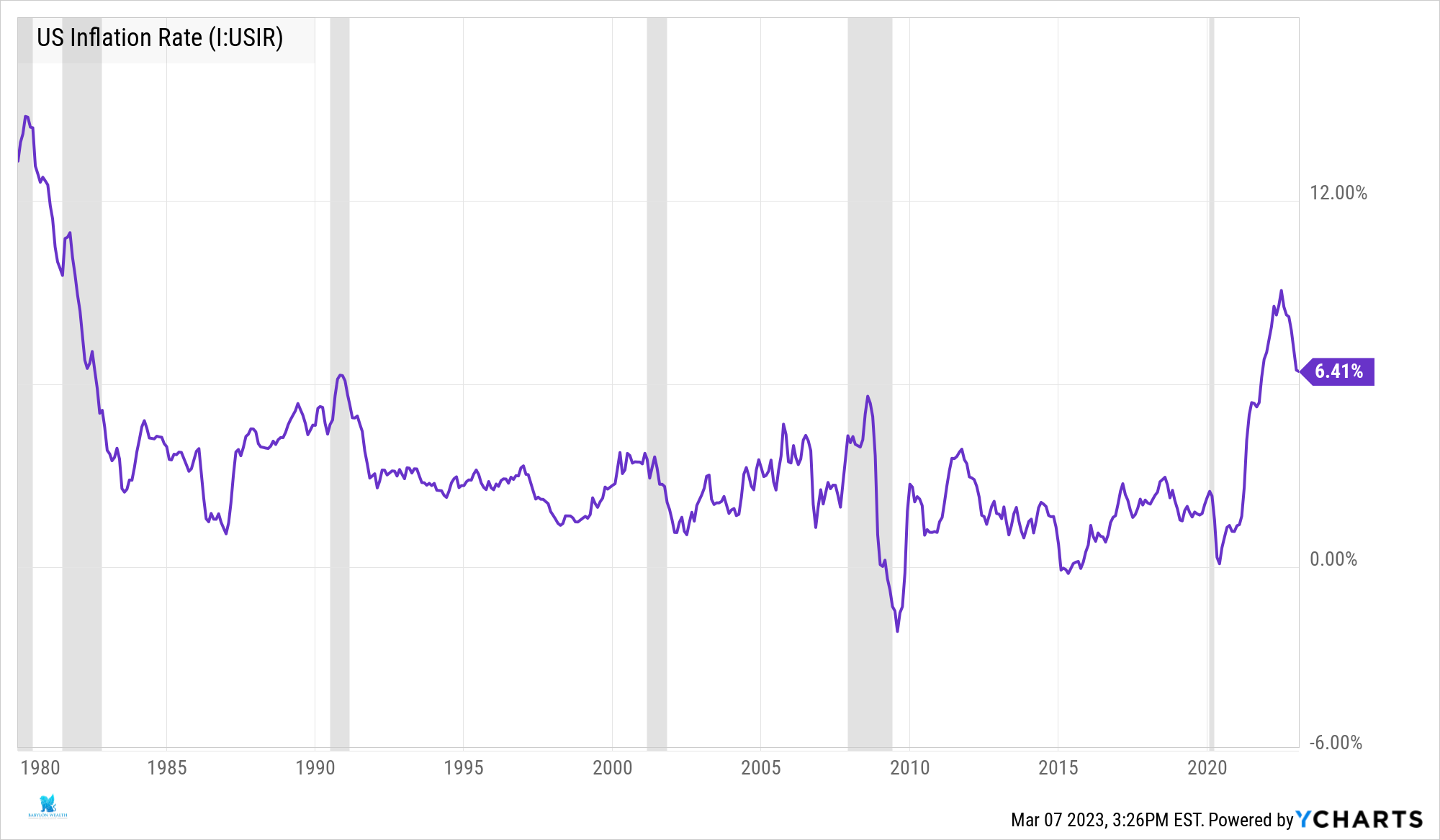
In the years since the GFC, the central banks around the world artificially kept zero interest rates. We had cheap labor from China, quickly becoming a global manufacturing hub. Cheap oil fueled consumer spending. The boom in technology – the internet, mobile phones, 3G, 5G, and cloud computing boosted productivity and created deflationary pressure on prices.
These conditions no longer exist. Central banks are racing with the clock to raise rates. China is burdened with its own debt. Oil is no longer cheap, and oil companies are more strategic in capital spending. While the technology factor remains strong, technology companies must reset their business models to the new economic environment.
The economy is resilient.
The U.S. economy remains strong despite negative views and overwhelming predictions of a recession. Last year, many experts called for a recession at the beginning of 2023, but here we are, still chugging along.
In the fourth quarter of 2022, the US GDP rose 2.7%. The unemployment rate is at a historic low of 3.5%. And the total nonfarm payroll employment rose by 517,000 in January 2023. The February payroll figures are also impressive, with employers adding another 244,000 workers.
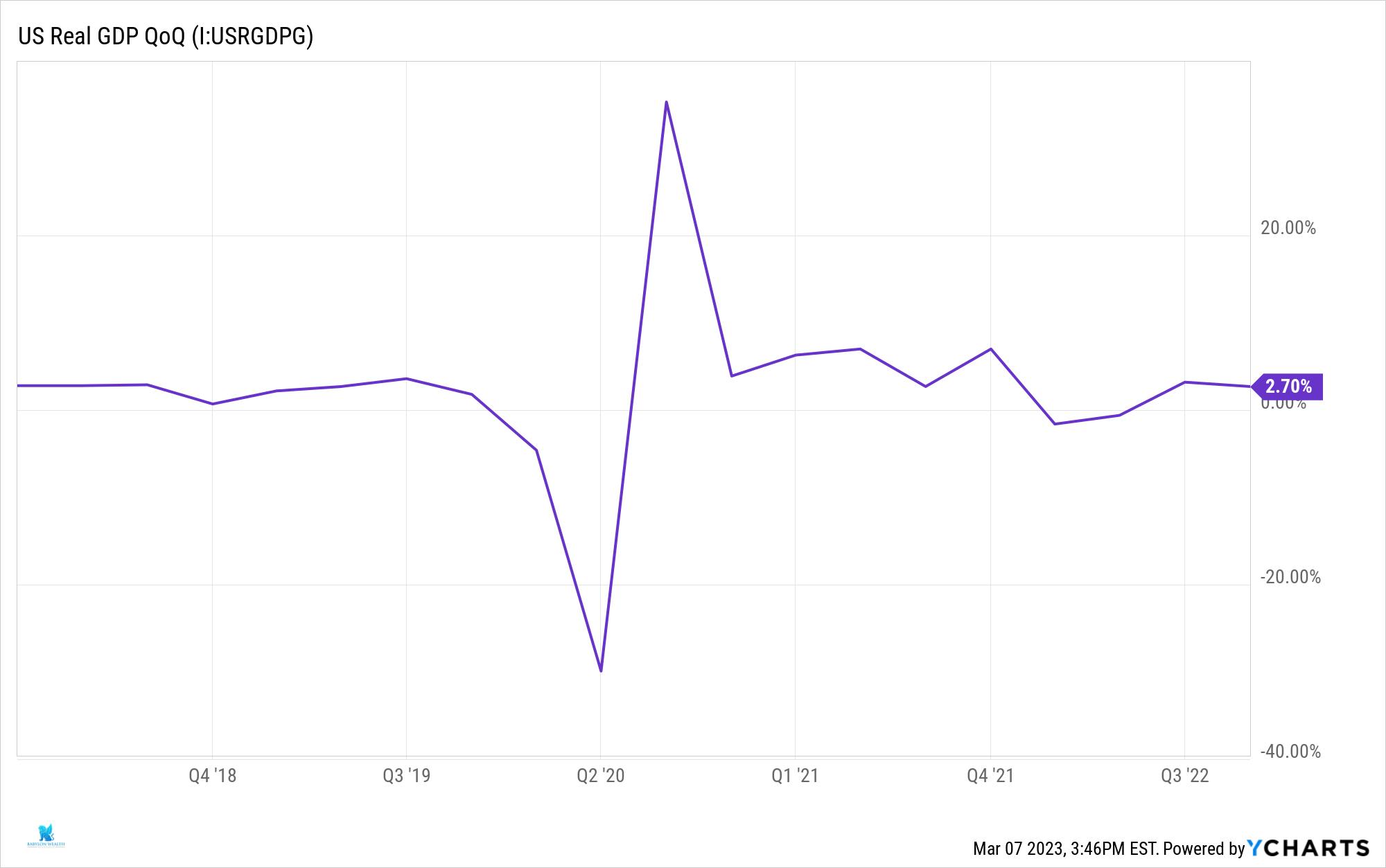
As much as I respect Jamie Dimon, the CEO of JP Morgan, his recommendation in June 2022 to brace ourselves for an economic hurricane didn’t age well.

Even Elon Musk got pessimistic about the economy in October of 2022.
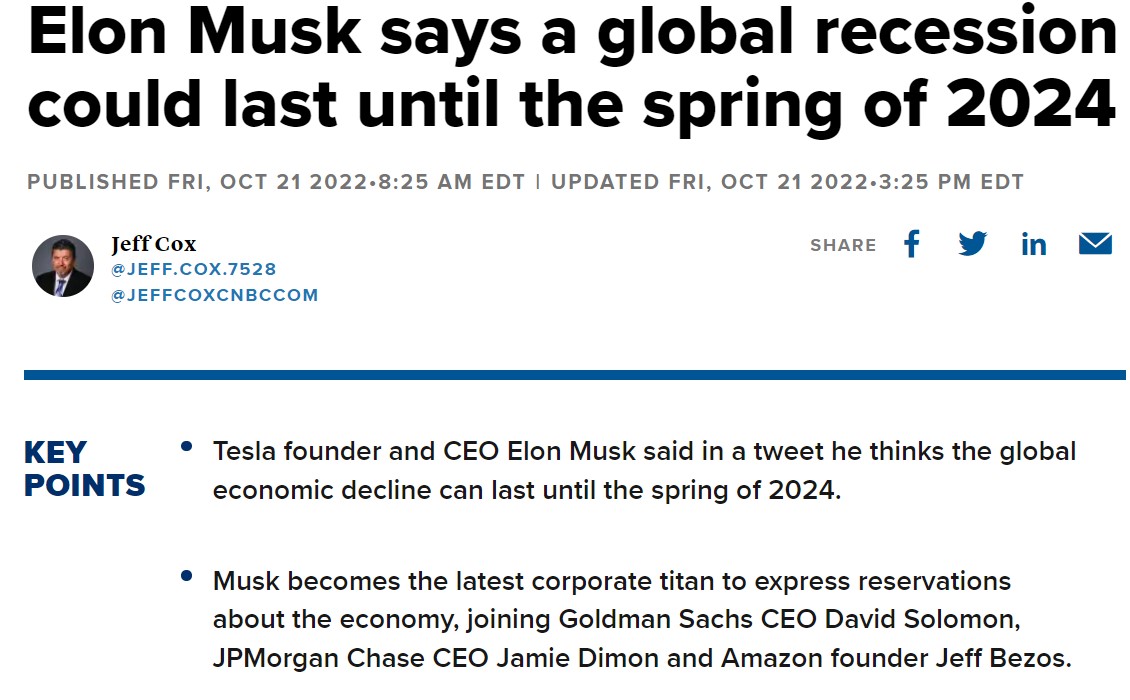
Where is the recession?
Soft or hard, no or delayed landing. Recession gets pushed forward?
You are probably wondering if everyone is expecting a recession; how come it’s not happening? Here is my view:
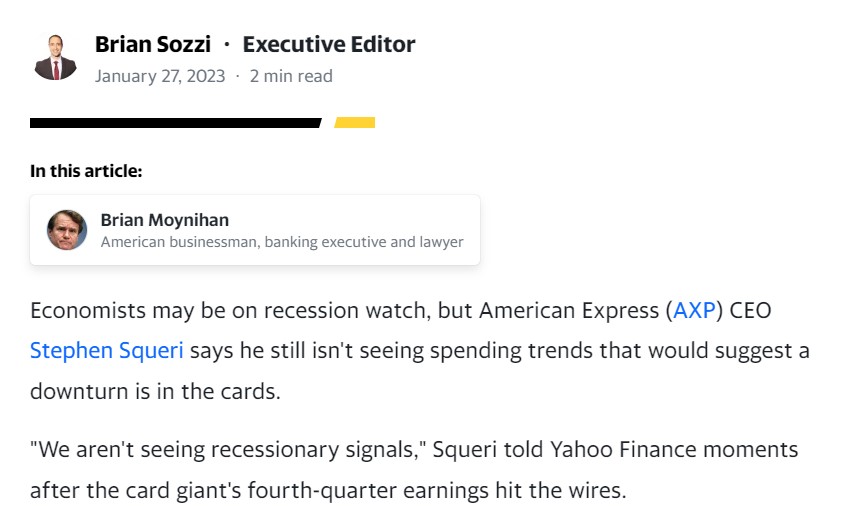
Diversified economy
The U.S. is the largest but also one of the most diversified economies. The consumer drives 70% of the economy. Unlike Europe, China, and Japan, we are energy independent.
Job onshoring
The U.S. is expanding its manufacturing footprint in semiconductors, electric vehicles, battery cell production, and hydrogen facilities. Even old-school industries like steel and lumber are making a comeback.
Tight labor market
The latest data shows over 10 million job openings in the U.S. versus only 5.7 million unemployed workers. Forty-seven million Americans left their jobs in 2021. For context, that was 23.5% of the U.S. workforce in 2021. Furthermore, the pandemic drove more than 3 million adults into early retirement.
Energy exports
The U.S. is on track to become a net exporter of crude oil with a record sale of 3.4 million barrels per day. The United States became the world’s largest exporter of liquefied natural gas during the first half of 2022, surpassing Qatar, and Australia, on the back of European demand and surging prices.
Technology leader
The U.S. is a technology and innovation leader in software engineering, A.I., cloud computing, E.V., clean energy, biotechnology, medical devices, and robotics. All these services remain in high demand even in a high inflationary environment.
Lagging effect of record stimulus
Nearly $ 5 trillion of the Covid pandemic and post-pandemic stimulus is still circulating in the economy. The money supply went from $15.3 trillion in 2019 to $21.7 trillion at its peak in March 2022.
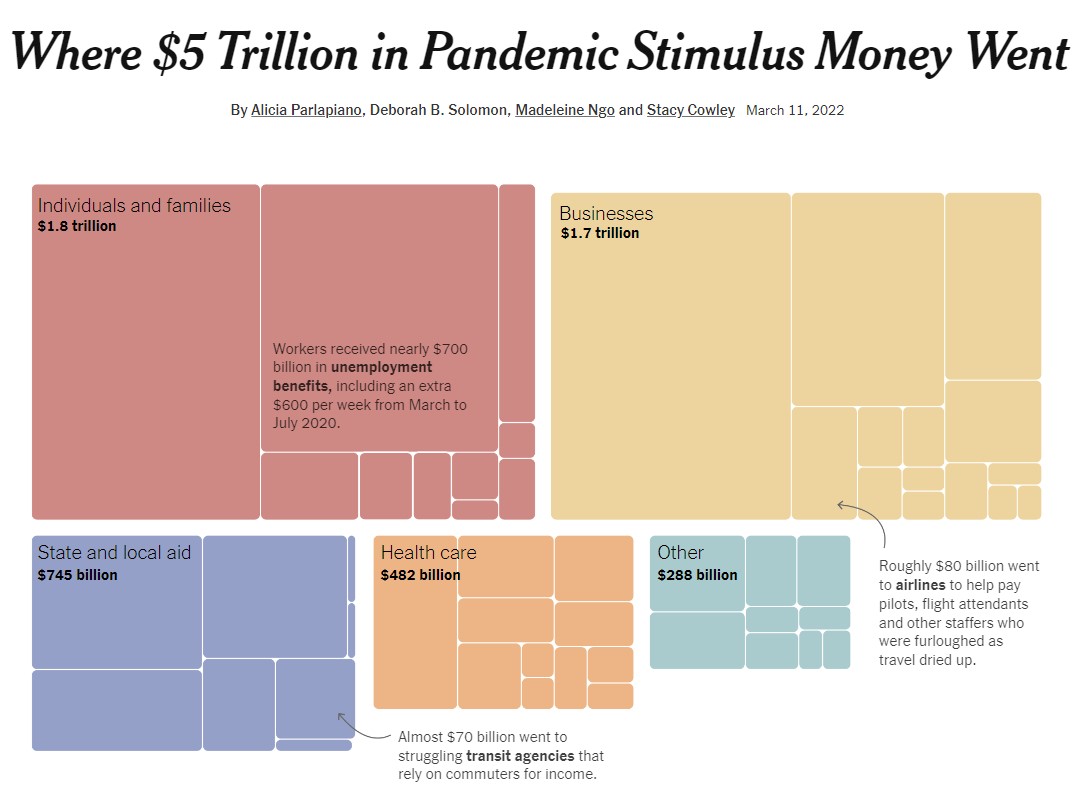
The global picture is even more staggering. Over $10 trillion in the pandemic fiscal stimulus was distributed in two months, three times more than the 2008 – 2009 financial response.
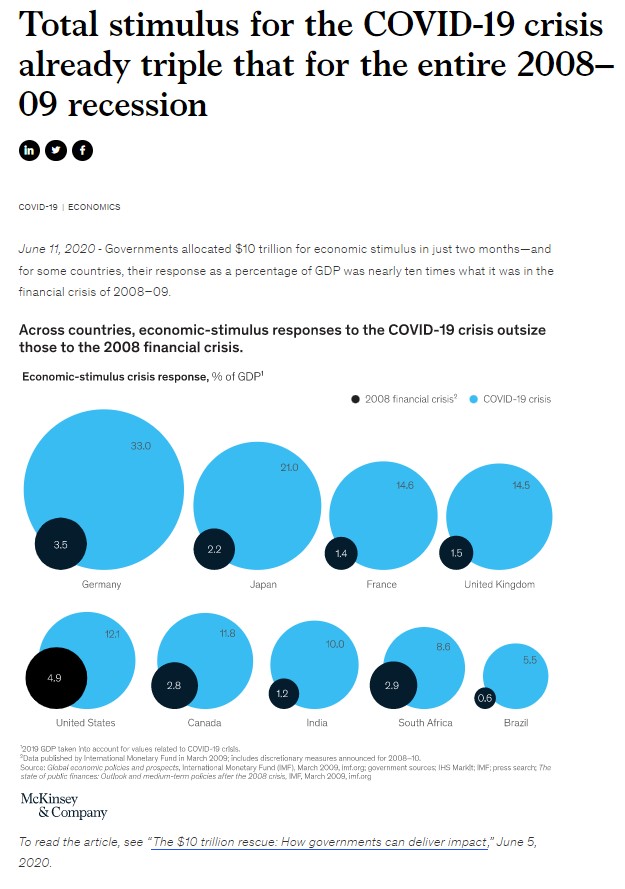 The bottom line is that we are in unchartered territory. The economy has way too much stimulus, and its lagging effect may persist for several years.
The bottom line is that we are in unchartered territory. The economy has way too much stimulus, and its lagging effect may persist for several years.
The U.S. economy is less interest rate sensitive.
The U.S. economy is less susceptible to interest rate hikes. For several reasons, the Fed raising interest rates may have a meaningful short-term impact.
Mortgage Refinancing
Nearly 20% of all homeowners with a mortgage refinanced their mortgage in 2020, and another 25% did it in 2021. Many U.S. homeowners are sitting on a mortgage loan with a record-low fixed interest rate.
Excessive savings
During the pandemic, fiscal support more than replaced other income losses in the aggregate, propping up personal income even as spending fell. By the third quarter of 2021, the excess savings reached about $2.3 trillion, which began to decline as spending picked up and fiscal support dropped. Even so, by mid-2022, extra savings remained at about $1.7 trillion.
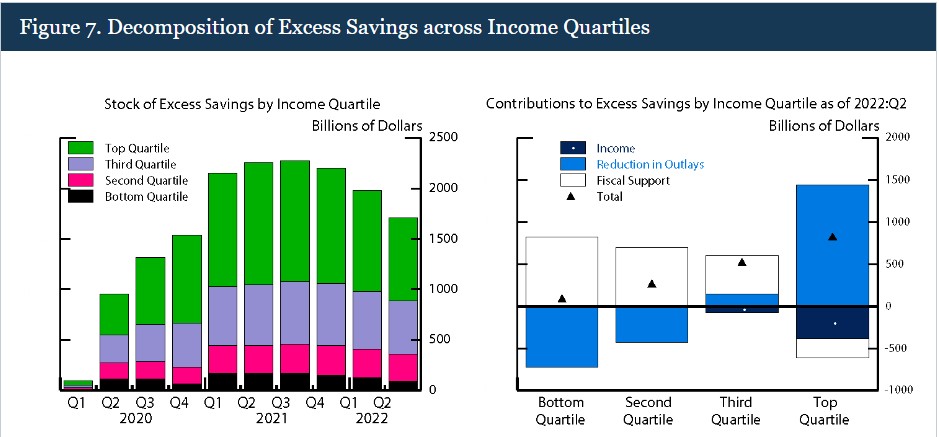
Housing inventory remains tight.
Single-family home inventory is still low. With more millennials forming a family and having children and existing homeowners willing to stay in their homes for longer, I don’t see an immediate solution to this problem.
Corporations’ balance sheets are healthy.
Most S&P 500 top 20 companies have healthy balance sheets with low debt levels. Corporations like Apple, Microsoft, Google, and Exxon Mobile operate with high free cash flows, allowing them to self-fund their business without borrowing excessively. Furthermore, many companies were also able to lock in lower borrowing costs as interest rates reached new lows in 2020 and 2021. Just 3% of junk bonds or those issued by companies below-investment-grade ratings, only 8% come due before 2025, according to Goldman Sachs.
Monetary policy is weakening.
The Fed Reserve of Kansas posted research in 2015 on the diminished impact of interest rates on the financial markets. Even though the report doesn’t arrive at a definite conclusion, they make three suggestions. “First, changes in the conduct of monetary policy do not appear to be responsible for the shift in interest sensitivity. Second, linkages between the short and the long end of the yield curve, along with linkages between financial markets and the overall economy, have become protracted. Third, structural shifts have altered how employment changes at the industry level feedback to the aggregate economy.”. Not all industries react the same way to interest rate changes, and many sectors move in the opposite direction.
The Fed doesn’t want the markets to go higher.
It’s clear to me that the current Fed regime is hostile to the stock market. Due to its weakened monetary policy, the Federal Reserve uses the stock market as a second derivative tool to control the money supply. Higher stock prices would lead to higher household net worth and improved ability to spend and borrow. I expect the Fed chair and all Fed representatives to continue their tough talk. After underestimating the inflation rise in 2021, the Fed has been playing catch-up for 2022. They want to appear determined to crush inflation. I don’t like that the Fed has become so reactive to backward-looking data while has shown clear signs of declaration. One of the biggest risks for the U.S. economy and stock market in 2023 is a Fed mistake to overtighten and bring the economy to a stall.
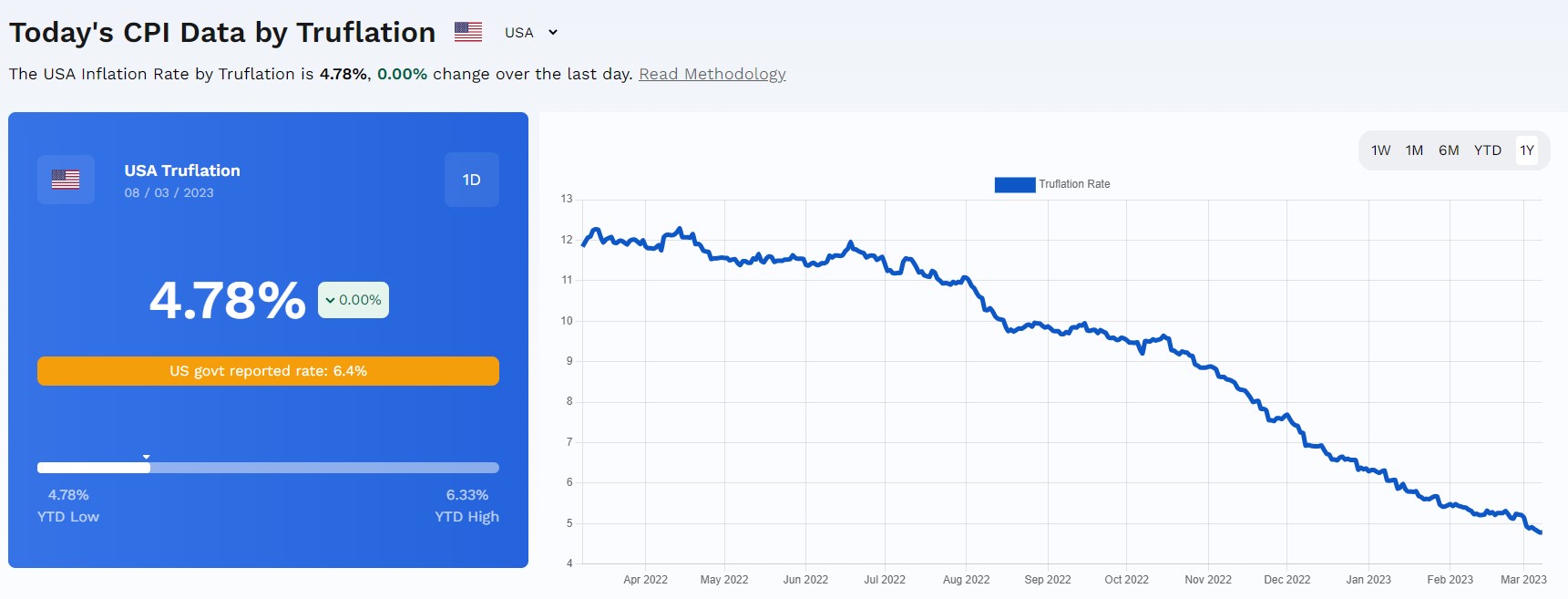
Where will the stock market go in 2023?
“Thousands of experts study overbought indicators, head-and-shoulder patterns, put-call ratios, the Fed’s policy on money supply…and they can’t predict markets with any useful consistency, any more than the gizzard squeezers could tell the Roman emperors when the Huns would attack.” – Peter Lynch.
The daily swings of the stock market remain challenging for day traders. Today’s market doesn’t give you too many chances in both directions. For long-term investors and those sitting on the sidelines, we see the current market conditions as an excellent opportunity to build a position and prepare for the next bull market.

This kind of headline makes me want to buy more stocks. Financial history has shown time and time again that the best time to buy stocks with the highest expected long-term returns is when they are out of favor. Imagine the returns of those investors who continued buying through the market bottom of the Global Financial Crisis. I was there. Nobody wanted to buy stocks then. Some people were even liquidating their 401ks.
S&P 500 price target for 2023
I believe we have a narrow path for the stock market to finish the year higher than where we started, But the ride will be bumpy. We may go a whole lot of nowhere for a while. 2023 is going to be a true test for patient investors. I don’t expect a sharp V-shape recovery back to the prior highs of 2021.
Furthermore, technology and other growth stocks, which took the poison pill in 2022 and dropped 30%, 50%, and even 80%, may fare better than slow growth slow-moving companies in the consumer staples industries.
My view is that inflation will moderate towards the second half of the year. And corporate earnings will accelerate in the third and fourth quarters of 2023.
This is an ideal environment for companies with solid balance sheets and adaptable management. After a decade of zero interest and low cost of capital., now the bar is higher. Those companies that can adapt to the new economic reality will gain market share and reap benefits in the future.
It’s a stock pickers market.
Contact Us

